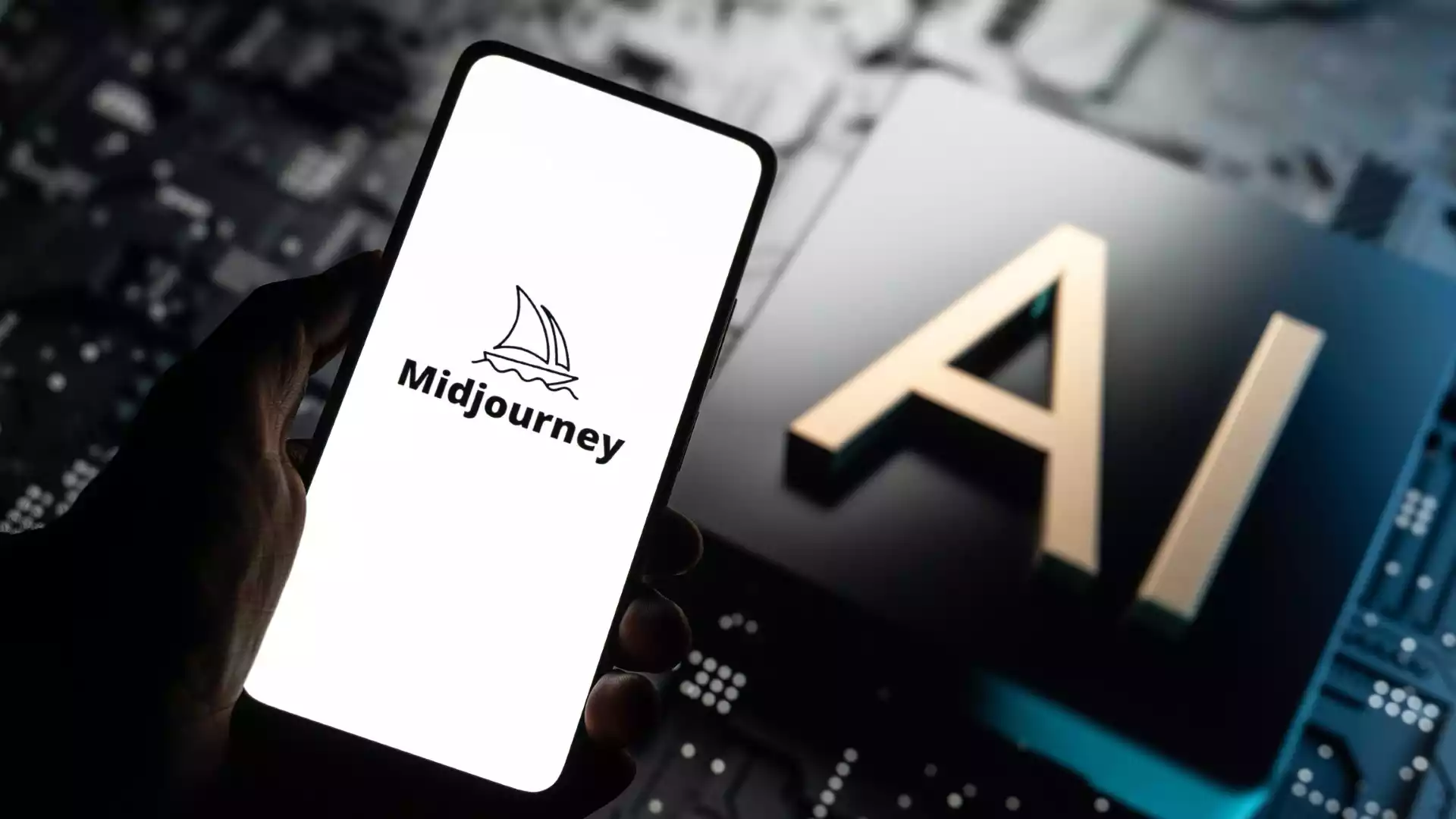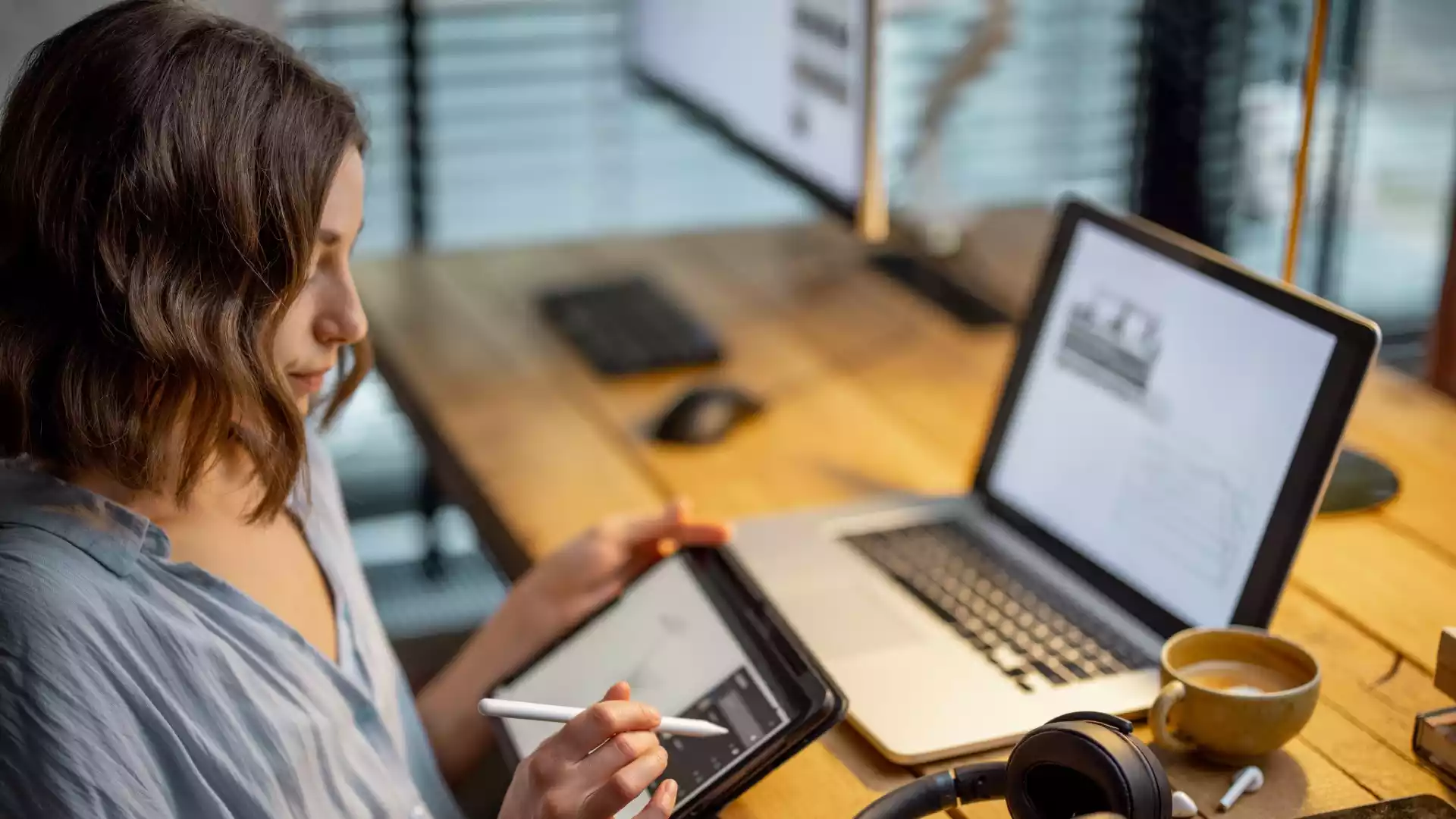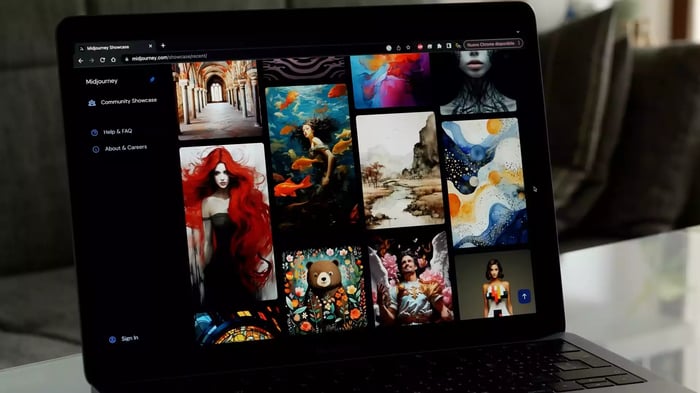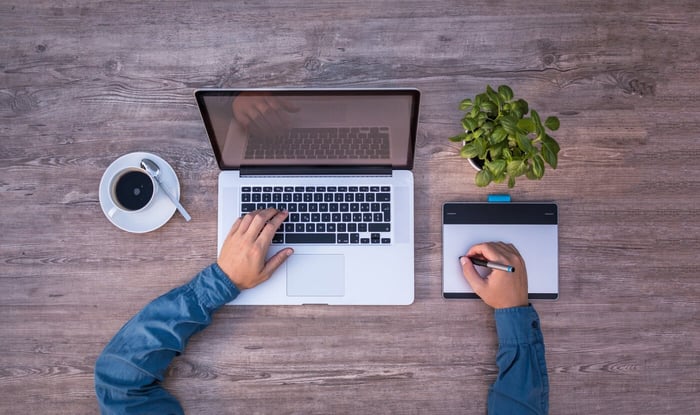Artificial intelligence has become a contentious topic in the art space over 2022 and 2023, with many arguing that it devalues the human element of creativity. On the flip side, you’ll find others who think it’s not all bad—and that AI can help artists maximize their potential.
How is AI Art Generated?
AI art is created through a process that combines elements of computer science, machine learning, and often vast datasets of existing artworks. Here's a step-by-step overview of how AI art is typically created:
- Training the AI Model: The first step involves creating an AI model capable of generating art. This is done using machine learning algorithms, particularly a type called neural networks. These networks are designed to mimic the way the human brain processes information.
- Data Collection: The AI model is trained using a large dataset of images. These images can include anything from classic artworks to modern digital creations. The purpose is to give the AI a broad understanding of different art styles, forms, colors, and textures.
- Learning Patterns and Styles: During training, the AI analyzes the dataset and learns to recognize various patterns, styles, and elements of art. It learns, for instance, how colors are used, how objects are shaped, and how different styles like impressionism or surrealism are characterized.
- Generating New Art: Once trained, the AI can generate new artworks. This is often done through a process called "prompting," where a user inputs a text description (e.g., "a sticker printing design in the style of Van Gogh"). The AI then uses its learned knowledge to create an image that matches the description.
- Refinement and Iteration: The generated art can be refined through further input or iterations. Some AI art platforms allow users to adjust certain parameters or provide more detailed prompts to guide the AI towards a desired outcome.
- Output: The AI generates a unique work of art as its final product, which can range from abstract compositions to incredibly detailed images, depending on the model's level of sophistication and the prompt's level of specificity.
Key Technologies Used in AI Art Generation:
- Neural Networks: Particularly, Generative Adversarial Networks (GANs) and Convolutional Neural Networks (CNNs) are commonly used. GANs involve two neural networks, a generator and a discriminator, which work against each other to improve the quality of the generated images.
- Deep Learning: This is a subset of machine learning where neural networks with many layers (deep networks) learn from large amounts of data.
- Text-to-Image Models: For AI platforms that generate images from text descriptions, models that understand both textual and visual information are used.

Examples of AI Art Platforms:
- DALL-E: A product of OpenAI, DALL-E generates images from textual descriptions, demonstrating a profound understanding of both linguistic and artistic idioms.
- DeepArt: Uses deep neural networks to turn photos into artworks in the style of famous artists like Van Gogh or Picasso.
- Artbreeder: Allows for the blending and manipulation of images to create new artworks, using GANs.
We’re already seeing that AI, even in its early days, has impacted art. But how will that continue in the future? Let’s look at both the positive and negative implications of AI on creativity.
The Positives of AI Art on Creativity
Despite many portraying worst-case scenarios for AI and creativity, it’s not all doom and gloom. The technology could have many positive effects.
1. AI Art Can Be Used as Prototypes for Human-Developed Projects
We’ve already seen how ChatGPT has been used in the wild for effective conceptualization, such as brainstorming blog topic ideas. And when it comes to visual art, it might be possible to use AI art when prototyping human-developed projects.
You might remember when that image of the Pope wearing a puffer jacket circulated in early 2023; even if you’re not getting involved for the memes alone, you can still use Midjourney to create great AI art. As a photographer, you can plan fashion and street photoshoots, and as an illustrator, you can use different prompts to inspire your own drawings and paintings.
Once you’ve got an idea of what you can create, you can get to work more effectively.
2. Encourages Outside-the-Box Thinking
One of the surefire signs that you’re in a creative rut is producing art on autopilot. In those situations, exploring new ideas can help you take your creations to the next level.
AI has the potential to not just design prototypes but also offer inspiration for future projects. You can keep track of these ideas with secret boards on Pinterest and refer to them whenever you need to.
3. Human Art Could Be Considered More Valuable
Many AI art critics have argued that AI creations devalue human art. And when you consider how advanced some AI art creations look at first glance, it’s easy to see why this opinion has arisen. But contrarians argue that the rise of AI-generated art puts more value on human art.
Let’s use photography as one example. I spend 15+ hours per week taking photos, and in my spare time, I’m learning about different concepts—along with how tools like Lightroom and Photoshop function. I can very easily identify an AI-generated image.
People who are well-versed in art—such as collectors and gallery owners—are also likely to notice when AI has generated what they see. That said, as technology and algorithms become more advanced, the ability to differentiate between real photographs and AI may become more difficult.
4. AI Still Needs Human Input to Learn
Whether we succumb to a robot apocalypse is yet to be seen—but for now, AI still needs human input to learn. With that in mind, AI art is limited in how far it can progress.
Although AI will become more advanced in the coming years, it’s still going to be hard for it to replicate human creativity.
5. It Reduces the Learning Curve for New Artists
One of technology’s greatest benefits is that it has reduced the learning curve for aspiring artists. And with the rise of AI art, one could argue that new creators will be able to learn the basics of their craft more quickly.
We spoke earlier about using AI to develop prototypes, and new artists can use these to get an idea of how they want to shape their own style. Once they learn about the fundamentals of their discipline, these artists will find it easier to bring their creations to life. And as a result, we could see even more talented creatives rise to prominence in the future.
We recommend AI Art for sticker designs, as it opens up the possibility for non-artists to create some really neat sticker products.

The Negatives of AI Art on Creativity
Although AI art can have positive effects on creativity, it’s also important that we don’t ignore the possible downsides.
AI art generators, which draw from vast databases of existing art, have democratized art creation, enabling anyone to produce images that approach parity with historical masterworks in seconds. While this democratization is a leap forward in accessibility, it simultaneously poses a threat to the livelihood of artists whose works are used without permission.
1. The Risk of Everything Becoming the Same
One of the biggest concerns about AI art is that, because it’s easy to replicate, everything could become the same. We’ve already seen how many people will follow trends on social media, such as copying the same types of photos on Instagram.
This problem will likely impact people and businesses unwilling to think outside the box. However, if more art becomes the same, one positive effect could be that more people may crave authenticity, meaning that artists who remain true to themselves will still succeed.
2. Some Might Devalue the Skill of Human Art
As someone who’s worked relentlessly at photography for almost seven years, and drew and painted a lot as a youngster, I can tell you that mastering any creative skill takes years. Besides the technical aspects, you also need to present your ideas and emotions.
Considering that you can generate AI art in a short time, some could argue that the years of dedication involved in becoming a successful artist may become devalued. Moreover, there’s the risk that aspiring artists either become disheartened or complacent, meaning that we never get to see their true skills.
3. The Issue of Scraping Existing Art
AI art has genuine ethical concerns that many creatives have been quick to mention. Scraping existing art is one of the most controversial talking points, and it can be quite infuriating when your work is being scraped.
Scraping raises the question of crediting artists. Moreover, some could argue that it totally devalues the hard work that someone has put in to create a painting, photo, or other kind of art.
Since AI is here to stay, it’s important that we have an honest conversation about scraping art and the ethics of this. If you’re an artist, you can take steps to protect your images from AI art generators.
4. Copyright Issues
Another huge talking point with AI art and creativity surrounds copyright. Artists have had to deal with others using their work without permission for years—many accounts on social media have taken people’s content without giving them credit, for example.
To non-artists, it can seem like creators are being too sensitive to issues of this kind. But the reality is that if someone has potentially spent years on their work, they’re within their rights to be disgruntled about others using or copying what they’ve created.
Like the ethics around scraping, it’s important that we acknowledge the copyright difficulties surrounding AI art.
Final Thoughts
As AI art continues to evolve, its impact on society and the art world will likely deepen. Technology is changing how artists conceive of what can be made, pushing the boundaries of creativity. However, it also raises critical questions about the nature of art, the value of human creativity, and the need for ethical and legal frameworks to govern this new frontier.
AI art can be used as prototypes for human-developed projects, inspiring photographers and illustrators to create their own unique work more effectively. AI encourages outside-the-box thinking, offering inspiration and new ideas for artists to take their creations to the next level. AI-generated art actually puts more value on human art, as art experts can easily identify AI-generated images and appreciate the time and skill it takes for humans to master their craft. However, with AI art still in it’s infancy, it raises questions about when AI generated art will become too realistic to differentiate. It's already being used in the sticker and card printing industries to help non-artists create high-quality products.
AI will certainly change the world, but it’s not necessarily going to make artists obsolete. In fact, AI art could amplify how difficult becoming a skilled painter, illustrator, or photographer is. Hopefully, that will also result in creatives getting fairly compensated for their work and encourage artists to think outside the box.
We do, however, need to have honest conversations about AI art and the possible ethical problems that could arise. Scraping and copyright are both essential talking points, and we also need to ensure that art doesn’t lose its soul.






